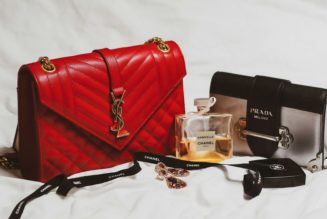
Why Luxury brands are jumping on the NFT bandwagon
From Prada NFTs to Dolce & Gabbana fashion shows in the Metaverse, Web3 is definitely in vogue. As brands attempt to win over Gen Z consumers, they’re flocking to the metaverse to capitalise on the trend and improve consumer experiences. However, brands viewing this technology as a passing fad could be missing a trick, and luxury brands who want this to pay off in the long term will need to think hard about how they use Web3 and blockchain beyond simply showing off products – from consumer experience, to increased customer participation and meeting ESG goals.
Luxury brands are facing a generation of buyers, the majority of whom are more belief-driven than ever before – in fact 62% of Gen Z prefer to purchase from sustainable brands. As businesses continue to grapple with the challenges of sustainability and meeting their Environmental, Social and Governance goals, blockchain technology could be the answer. Blockchain is, by design, transparent and immutable, giving brands the chance to build a record of their supply chain, products and processes to reliably demonstrate their sustainability efforts, meet their ESG goals, and evolve into a futureproof business.
Digital records of tangible goods
Some NFT sceptics view them as an over-hyped craze, where the crypto-wealthy pay outrageous prices for digital art. But digital art is only one use case of NFTs, which are simply a means of assigning a unique value to digital assets. In reality, they hold much more promise.
The same technology that bestows verifiable, unique ownership to NFTs can be applied to verify the ownership and provenance of physical goods. Digital product passports (DPPs), for example, leverage the secure, transparent nature of blockchain to create a record associated with unique products, which can be used across its lifecycle. Everything from verifying details of the supply chain and tracking sustainable sourcing, to adding value to the vintage and resale market with authentication and previous ownership checks, can be designed using blockchain technology.
Blockchain technology can also be used to enhance customer experience and improve trust in a business’s sustainability efforts. By referencing DPPs, customers can have a more detailed understanding of the full supply chain for products they purchase, such as the source of materials and manufacturing process.
When source materials enter the supply chain, information about where they came from can be recorded on the blockchain so that consumers can check for themselves that they’re made from ethical, renewable components. The manufacturing plant and its location can be recorded, to prevent hidden use of unethical labour in developing countries. Rather than simple ‘Made in X’ tags in the item, each component part can have a richer, more detailed history that consumers can verify at the push of a button.
The DPP can also be updated each time a luxury good is repaired, altered or resold. This gives a better idea to would-be customers of the history of the item they are purchasing on a second-hand market and veracity that repairs are high-quality.
Bringing customers into the conversation
Governance is another use case of blockchain that is still coming to its prime. Businesses in the gaming sector are familiar with decentralised autonomous organisations (DAOs), but all brands can leverage this technology to bring customers into certain aspects of corporate governance. This could involve allowing luxury goods customers to participate in the decision-making process on collaborations with other businesses or designers, or in determining where philanthropic donations should be directed.
DAOs function by issuing voting tokens to customers, which can be based on the number of products owned, the length of time an account has been held, or the length of time a product has been owned. Customers can use these tokens to vote, with blockchain storing an immutable log that ensures fairness and transparency in the result.
Allowing customers to vote this way on collaborations, philanthropic recipients, or even to gauge opinion on new lines can effectively turn customers into stakeholders and more loyal brand advocates.
Blockchain drives revenue
Gen Z are already spending on Web3 – nearly a quarter (23%) have already started collecting NFTs. While the opportunities for ESG outlined above are compelling, there are also some promising reasons that investment in blockchain could see quick results in the luxury goods sector, not least because of the opportunity it provides to enhance the customer experience in ways that today’s consumers value.
Blockchain could be the future of sustainable business practices. If product authenticity can be confirmed by a tamper-proof record stored on blockchain, as well as ownership records, brands could seize an opportunity to resell their own vintage collections to consumers, creating a circular economy and increasing revenue. This also signifies the longevity and quality of a brand’s products, as well as the timeless appeal of luxury goods articles, increasing brand value.
With a digital product passport twinned to each product that can be easily and quickly verified, counterfeits can be swiftly identified, lowering their value as buyers are denied access to resale markets, quality assurance, and Web3 experiences from the brand.
Not only are counterfeits bad for the environment, often stemming from unethical labour practices and low-quality materials, they undermine revenue and brand value for luxury brands. Profits can therefore be bolstered by taking technological steps to make products more difficult to fake.
Web3 and blockchain: Here to stay for more than a season
Blockchain technology offers luxury goods creators a unique opportunity to not only prove their efforts in implementing sustainable business practices, but also enhance the customer experience – two key facets to winning over Gen Z consumers. By creating a transparent, immutable record of their products and involving customers in aspects of governance, businesses can enable circular economies, increase transparency and trust, and promote sustainability.
As the business landscape continues to evolve, companies that embrace blockchain technology, to both enable and prove their sustainable business practices, will be well-positioned to succeed in a market where social responsibility is becoming increasingly important.
About the Author
Lars Rensing is CEO of Protokol. Protokol is a full-scale Web3 & blockchain provider that offers a range of services, products and solutions. All about simplicity, our streamlined and phased approach to service delivery minimises complexity and reduces the barriers to entry for implementing Web3 & blockchain technology. Whether acting as a full solution provider, consultative partner or system integrator – we deliver tailored Web3 solutions in an open and inclusive ecosystem to help your business turn complex blockchain technology into tangible business outcomes. Find out more at www.protokol.com
Featured image: ©Lev








